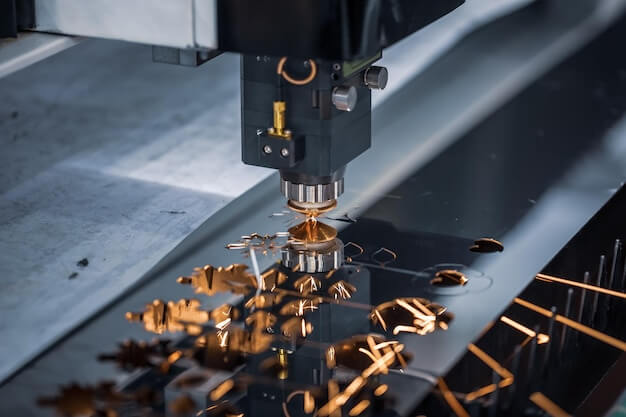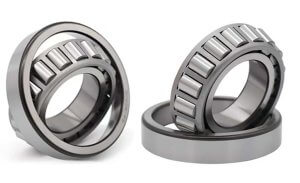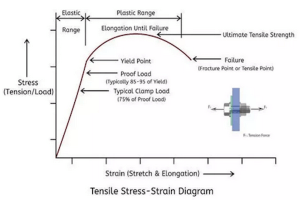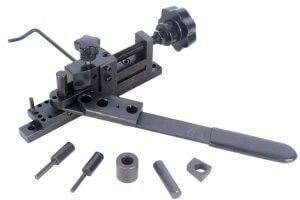Introduction to Injection Molding
In the manufacturing industry, injection molding is a commonly used technique. It is a process where material, either silicone or plastic, is heated until it melts and then forced into a mold, creating products in several shapes and sizes. Two major types of injection molding include silicone and plastic injection molding. The choice between the two primarily depends on the required strength and flexibility of the product. With plastic injection molding, you’ll typically see items like food storage containers, toys, and automotive parts while silicone-made products are often found in medical devices and kitchen utensils due to its heat-resistant properties.
Understanding Silicone Injection Molding
Silicone injection molding is a manufacturing process used to produce silicone rubber products. It offers several advantages and is suitable for a wide range of applications. Let’s explore the process and its key features.
1. Process Overview
The silicone injection molding process involves injecting liquid silicone into a mold cavity under high pressure. The liquid silicone is then cured and solidified to form the desired shape. This process allows for the production of complex three-dimensional structures with high accuracy and consistency.
2. Key Features
- Complex Structures: Silicone injection molding enables the production of intricate and detailed designs, making it suitable for products with complex geometries.
- Large-Volume Production: The process is well-suited for high-volume production due to its efficiency and repeatability.
- High Accuracy: Silicone injection molding offers precise control over the dimensions and tolerances of the final product, ensuring consistent results.
3. Advantages
Silicone injection molding offers several advantages over other molding processes:
- Elastomeric Performance: Silicone rubber exhibits superior elastomeric properties, providing flexibility and resilience to the molded products.
- Chemical Resistance: Silicone is highly resistant to chemicals, making it suitable for applications that require exposure to harsh environments or corrosive substances.
- High Temperature Resistance: Silicone can withstand high temperatures without losing its physical properties, making it ideal for applications that involve heat or thermal cycling.
- Biocompatibility: Silicone is biocompatible, making it suitable for medical and food-grade applications where contact with the human body or consumables is required.
- Re-moldability and Recyclability: Silicone can be re-molded multiple times without significant degradation, and it is recyclable, contributing to sustainability efforts.
- High Tear Strength: Silicone rubber has excellent tear strength, ensuring the durability and longevity of the molded products.
- Easy Color Addition: Silicone can be easily pigmented with various colors, allowing for customization and aesthetic appeal.
4. Summary
In summary, silicone injection molding is a versatile manufacturing process that offers numerous advantages for producing silicone rubber products. It enables the production of complex structures with high accuracy and consistency. Silicone’s elastomeric performance, chemical resistance, high temperature resistance, biocompatibility, and recyclability make it a preferred choice for various industries, including medical, automotive, electronics, and consumer goods.
Benefits of Silicone Injection Molding
The advantageous use of silicone as a raw material in injection molding presents a number of benefits. Firstly, the versatility of silicone stands out; it can resist extreme temperatures while maintaining its structural integrity. This characteristic makes it ideal for applications that are exposed to fluctuating conditions. For instance, baking mats made from silicone can tolerate high oven heats and still deliver excellent performance without deformity or damage.
- Durability: Unmatched durability, compared to traditional plastic, allowing products to withstand harsh usage conditions over extended periods.
- Versatility: Resistance to weathering, heat, and UV light exposure making it an ideal choice for outdoor applications.
- Safety: Biocompatibility and non-toxic nature which make it suitable for medical or food-related products.
In addition, silicone is used extensively across various industries due to this adaptability. Commonly, you’ll find silicone used in automotive components, kitchen utensils, medical devices, electronics, and more all produced via silicone injection molding processes.
Challenges of Silicone Injection Molding
The process of silicone injection molding is known to present several unique challenges. One significant obstacle arises from the viscosity of raw silicone material, which affects the accuracy and consistency of produced parts. The high temperature required for processing also poses a challenge since it can increase the risk of premature curing or cross-linking before filling the mold completely. This may cause defects such as short shots, un-uniformity or voids within the end product, compromising its quality and functionality.
- The handling of raw silicone: As mentioned earlier, raw silicone’s viscosity often proves challenging during the entire process. It is highly viscous and sticky in nature, thereby making transportation difficult.
- Maintaining process control: Silicone has distinct properties which make it resistant to wear and tear but controlling these processes requires precision. Process variation could lead to faulty products.
- Cleaning molds: Silicone presents another difficulty when it comes time to clean the molds. Its intrinsic adhesiveness makes it extremely hard to remove any residual silicone left on the mold surfaces after production.
Despite these complications, manufacturers continue to rely on silicone injection molding due to the unique benefits it provides such as heat resistance, durability and flexibility, all essential qualities in various industries including automotive, medical devices and consumer goods.
Understanding Plastic Injection Molding
Plastic injection molding is a manufacturing technique widely used for fabricating items from plastic trinkets and toys to automotive body parts, mobile phone cases, water bottles, and even TV components. The process involves feeding granular or pelleted plastic into a hopper which then leads into a heating chamber. This heated plastic material is forced under high pressure into a metal mold where it cools down, hardens and takes the shape of the desired product.
To illustrate this black magic-like process simply, imagine baking a cake in your oven at home—the batter (plastic) gets poured into cake pans (the molds), then placed inside an oven (heating chamber). After some time, you remove solid but still hot cakes, no longer in liquid batter form. In our example, the cooled cake mimics hard, shaped plastic.
Benefits of Plastic Injection Molding
In the debate between silicone and plastic injection molding, many manufacturers opt for plastic due to a range of benefits unique to this material. One primary advantage lies in the versatile properties of plastic; its inherent adaptability makes it suitable for a wide array of product types. Depending on the type of plastic used, products can be made highly durable, lightweight, flexible or rigid. These characteristics can make all the difference when choosing an ideal manufacturing process.
Commonly seen items produced by plastic injection molding include:
- Automotive parts: Due to its durability and susceptibility to precise molding, many car components are made using plastic injection molding.
- Toys and consumer goods: Owing to its flexibility and potential for colorful design, plastic is often chosen for toys and various household items.
- Medical devices: For sterile yet cost-efficient production, medical device companies frequently go for plastic.
Challenges of Plastic Injection Molding
Plastic injection molding, while beneficial in many ways, comes with its own set of difficulties and challenges. First among these is the high initial investment required to purchase an injection molding machine, which can be prohibitively expensive for small businesses or start-ups. Furthermore, creating molds for the injection process necessitates precision engineering, making it difficult without sufficient expertise.
- The cooling process too requires careful monitoring as rapid cooling may result in deformities or structural weaknesses in the finished product.
- An additional challenge lies in the production of complicated shapes; plastic has a tendency to shrink when cooled, which can complicate the final dimensions and tolerances of intricate designs.
A lack of material variety also proves problematic- not all types of plastics are suitable for injection molding, limiting design possibilities. Finally, environmental concerns surround this process, given that some types of plastic waste cannot be recycled easily.
Comparisons between Silicone and Plastic Injection Molding
The choice between silicone and plastic injection molding often boils down to the objective of the project. When it comes to durability, silicone molding triumphs due to its resistance to heat and chemicals, thereby offering products long life spans. In contrast, plastic molds might not withstand extreme conditions as effectively. However, considering cost-effectiveness, plastic molding is generally cheaper due to lower raw material costs and quicker production times. While silicone may be more expensive upfront, in applications where longevity and performance under extreme conditions matter, this initial investment can result in overall savings. Furthermore, both materials offer flexibility; while plastic excels at molding complex parts owing to malleability, silicon too offers high precision and tight tolerances for intricate designs.
- An instance where silicone would be preferable could be for creating automotive parts that need to operate under immense heat and harsh chemical environments without succumbing to warpage or degradation.
- On the other hand, a cheap toy which requires colorful aesthetics and does not encounter extreme operating conditions could be optimally produced using plastic molds.
Other Articles You Might Enjoy
- Silicone vs. Plastic Injection Molding: Which Material Fits Your Product Best?
Silicone vs. Plastic Injection Molding: An Overview Injection molding is a widely used method to produce parts from both silicone and plastic materials. To briefly elucidate, silicone injection molding involves…
- Low Volume Plastic Injection Molding: An In-Depth Guide
Low volume plastic injection molding is a manufacturing process used to produce small quantities of intricate plastic parts. This technique is essential in industries requiring unique, high-quality plastic components in…
- Plastic Injection Molding in Medical Manufacturing: Advantages & Disadvantages
Plastic injection molding is used to make many medical products. This manufacturing process is proven reliable and can produce large quantities at low costs per part. Injection molding allows for…









